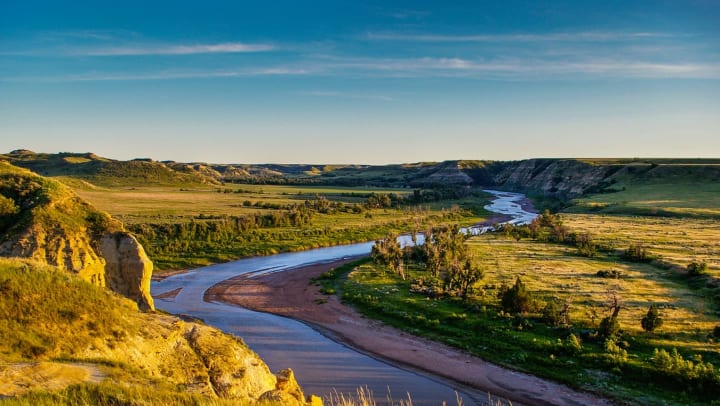Do you remember piling into the car and taking road trips with your family during the summer months when you were a kid? National parks are a popular destination for both new and seasoned road trippers. Whet your appetite for travel with these fun facts about national parks. Which one will be your next adventure?
National Park History: In 1916, President Woodrow Wilson, who wanted to protect and manage resources and land, started the National Park Service (NPS).1 Since then, the NPS has designated more than 400 areas in all 50 states as national park space. National parks encompass vast areas of land or water and protect resources that help create a sustainable ecosystem. Canadian national parks are designated similarly, with the first one being identified in 1885.
Mount Rainier National Park, Washington: Mount Rainier is an active volcano that attracts thousands of visitors each year, with summer being the most popular time to visit. The Wonderland Trail, which winds its way around the entire mountain, is comprised of 93 miles and is a popular trail for backpackers. Those who want to hit the 100-mile mark often tack on an extra excursion while on the mountain to hit that milestone, but many folks prefer to take daytime excursions throughout the diverse landscape, which boasts forests, lakes, glaciers, and waterfalls.
Badlands, South Dakota: The distinctive landscape of the Badlands can inspire awe—and questions, like how it was formed. Though it may be hard to imagine when looking at it today, The Badlands used to be a seabed, which is how the unique rock formations were created. The water dissipated over millions of years, but there is still fossilized proof of the sea that once existed.
Crater Lake, Oregon: Formed by water collecting in a massive crater, Crater Lake is the deepest lake in the United States, with a depth of 1,943 feet. Crater Lake has many fascinating features, including a volcano in the middle of the lake and an unanchored tree stump that has remained vertical for over 100 years, a phenomenon that mystifies scientists and delights visitors, who, due to the clarity of the water, can see the stump in its entirety.
Petrified National Forest, Arizona: This park is the only national park that contains part of Route 66, a highway system that helped popularize the pastime of summer road trips. The Petrified National Forest gets its name from the fossilized conifers found throughout the park, which have magnificent coloring thanks to the minerals found within the wood. Quartz creates the color white, and manganese oxides create blue and purple, while iron oxides create yellow and red colors.
Banff National Park, Alberta, Canada: With over 1,000 glaciers and 766 archeological sites, Banff National Park, whose name comes from the town of Banffshire, Scotland, where two of the original directors of the Canadian Pacific Railway were born, boasts abundant natural beauty. Recreational opportunities include hiking, skiing, cave exploring, and wildlife watching.
From the deserts of Arizona to the glaciers of Alberta, the national parks of the United States and Canada are well worth exploring. Road trips are a blast, but they also require a lot of planning. Fortunately, there are other ways to acquaint yourself with these natural wonders. Take a virtual visit to a wide variety of national parks here.
-
https://www.nps.gov/index.htm

